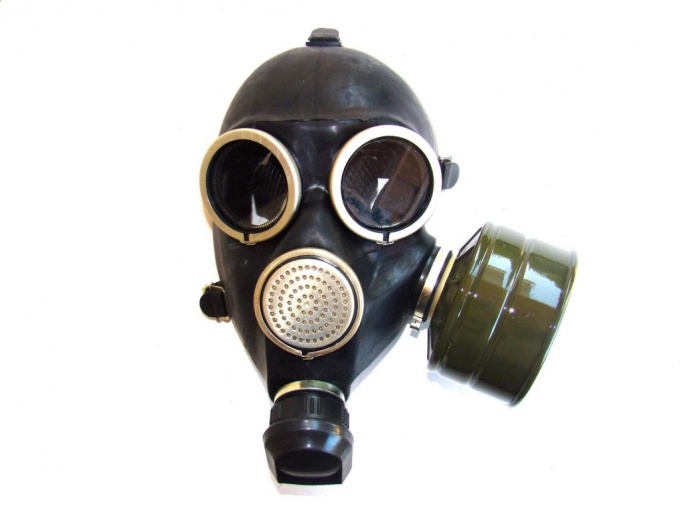Tip 1: How to wear a gas mask
Tip 1: How to wear a gas mask
Mask - A thing in the field is necessary. And at home (God forbid, of course) there can be a fire. In order not to suffocate, you have to put on a gas mask and escape from the room. The whole problem is not how to put on a gas mask, but how to put it on quickly. In words, we can not teach you, but the theory should be told.

Instructions
1
To know which gas mask you will fit,you need to know some of the parameters, namely, the horizontal and vertical girth of the head. The horizontal girth is measured along a closed line, which runs along the front of the brow, from the side slightly higher (2-3 cm) of the auricle and behind the most protruding part of the head. And the vertical girth can be determined by measuring the length of the vertical line passing through the chin, cheeks and crown. The resulting measurements should be rounded off so that the last digit is 0 or 5.
2
Now add both results and see whichThe size of the gas mask you need: - Less than 1190 mm - the first size - From 1190 to 1210 mm - the second size - From 1215 to 1235 mm - the third size - From 1240 to 1260 mm - the fourth size - From 1265 to 1285 mm - the fifth size - from 1290 to 1310 mm - the sixth size.
3
And now about how to properly wear a gas mask: Put your head in this saving "rubber bag with a filter" either after the signal "Chemical alarm" on the command "Gaza", or on its own initiative.
4
First, close your eyes tightly so that theirDo not faint with acrid smoke (you never know what happened), then remove the hat, remove the gas mask from the special bag and grab the helmet-mask for its lower part so that the thumbs are on the outside and the rest are inside.
5
Next you need to attach the bottom parthelmet-mask under the chin and pull it over your head with a sharp movement of your hands up. You will need to practice so that after putting on the gas mask there are no wrinkles left. Now you can take a full breath, open your eyes and resume breathing.
6
Given that the operations described above,you have to do it blindly, you need to train long enough. Although everything depends on the person and his degree of learning. After a good practice, you can even get closer to the army standards of wearing a gas mask: about 7-10 seconds.
Tip 2: How to choose a gas mask
Mask is designed to protect the respiratory system, face,eyes, and sometimes the scalp from harmful impurities, which are in the air in the form of vapor, fog, smoke, as well as pathogenic bacteria. Properly selected gas mask will save you life in emergency situations.

You will need
- To measure the gas mask, we need a soft measuring tape, a helmet - a gas mask, a gas mask size chart
Instructions
1
When you choose the right size gas maskcorrectly pick up on the growth of the front part (helmet-mask), check its serviceability. For the exact size of the gas mask, take a measuring tape and draw along the closed line of the head passing through the crown, cheeks and chin. Measure roundings to 0.5 cm.
2
Determine the size of the gas mask you need formeasurement results. Compare your results with the gas mask size chart shown in the figure. When inspecting, determine whether there are cracks and punctures in the helmet mask and connecting tube, the glass of the gas mask glasses are intact, the valves are working correctly. The filter box must not have any holes or dents.
3
Put on and test the gas mask. If the glasses of glasses are against your eyes, and the helmet-mask is tightly attached to your face, then you have correctly picked up your gas mask, and it is sealed. Further, make a strong exhalation and open your eyes, resume breathing, while you remove the contaminated air that could get there at the time of putting on a gas mask.
Tip 3: Who and how invented the gas mask
Gas masks of various designs widelyhave been used for about two centuries: they are necessary for specialists in carrying out harmful work in various industries, as well as military personnel and civilians who, under certain circumstances, fall into places with hazardous gas. Regardless of the design features, all gas masks serve one purpose - they prevent the threat of poisoning.








